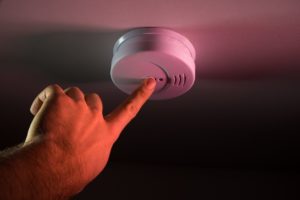Prevention and symptoms of carbon monoxide poisoning
Posted in Health & Wellness on December 29, 2017

Carbon Monoxide is a colorless, odorless gas. When present in the atmosphere, carbon monoxide can cause flu-like symptoms and lead to death. Every year in the United States, approximately 430 people die from carbon monoxide poisoning.
Carbon monoxide poisoning is especially a concern in winter months. Dangerous gases can build up when generators, furnaces, and wood burning stoves are used – and even when a car is warming in the garage.
The National Safety Council recommends installing a carbon monoxide detector in homes or cabins and changing the batteries twice a year (commonly fall and spring).
Symptoms of carbon monoxide poisoning
Although carbon monoxide is undetectable by humans, it is important to be aware of the symptoms before they lead to permanent neurological damage and even death:
- With low to moderate exposure, individuals may experience a headache, dizziness, fatigue, shortness of breath and nausea.
- As exposure and blood levels of the gas increase, individuals may experience mental confusion, loss of coordination, vomiting, loss of consciousness and death.
Carbon monoxide poisoning is called the silent killer because people often go to sleep, unaware that the gas is building up in their home and never wake up.
What to do if CO is present in your home
If you suspect you might be exposed to carbon monoxide, do the following:
- Immediately move outside to fresh air
- Make sure everyone in your party is accounted for
- Call 911 for emergency response
- Do not re-enter the property contaminated by carbon monoxide until given the all-clear by emergency response
Is your home or cabin equipped with a battery-operated carbon monoxide detector? If not, now might be the perfect time to install one or replace batteries.